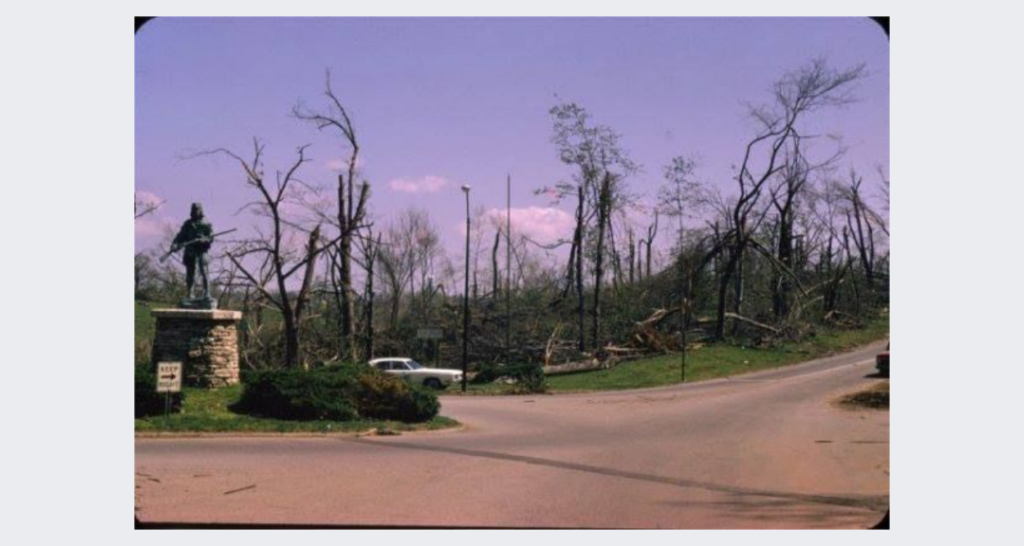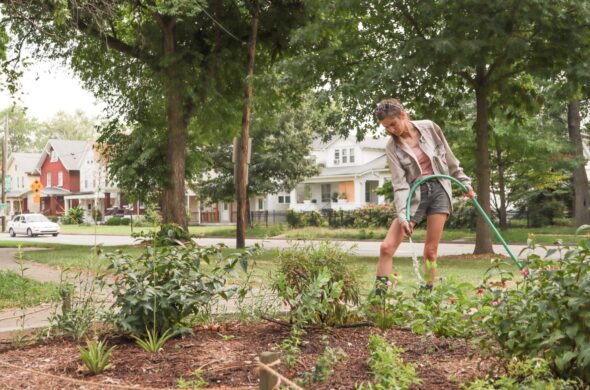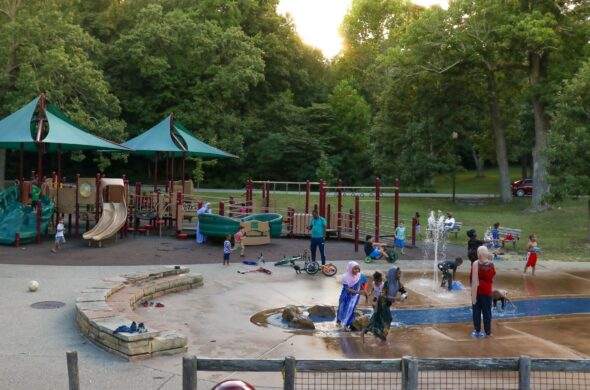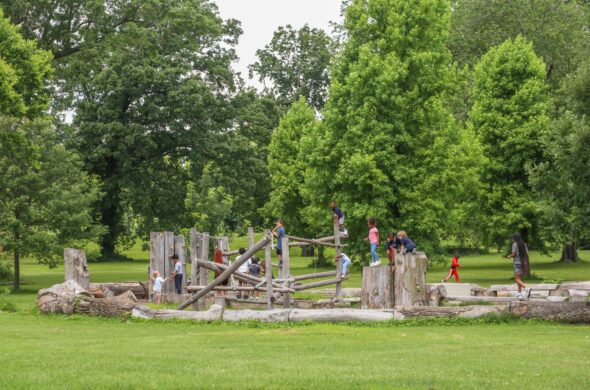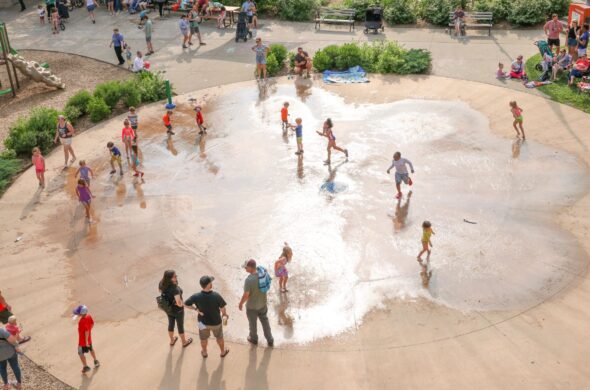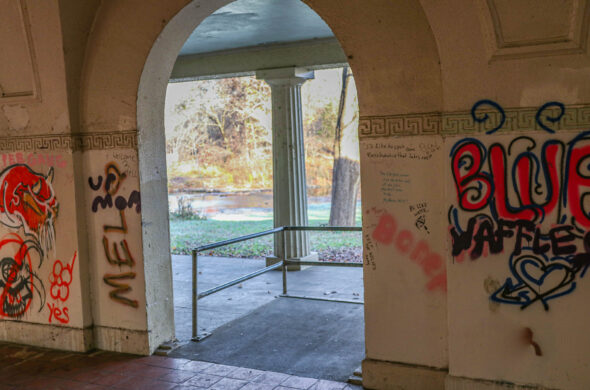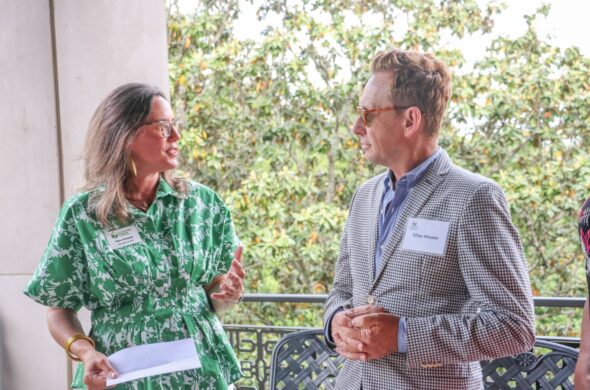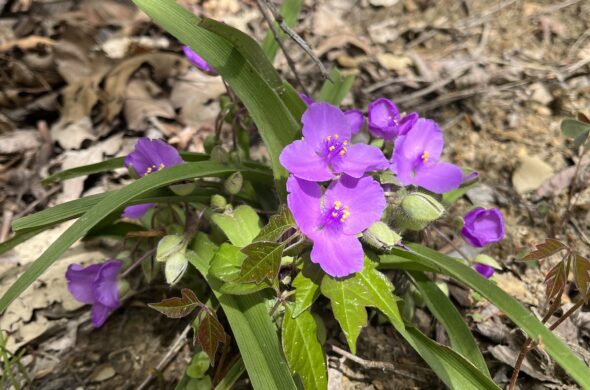Where were you? For many Louisvillians, April 3, 1974 is a day seared into memory – a day when an F4 tornado spread destruction through the city. This year is the 50th anniversary of this pivotal event, the reason that Olmsted Parks Conservancy exists.
After the storm, people were astonished by the visual of Cherokee Park with 80% of its trees decimated. Little did they know that an aftershock would come – not another weather event, but an ecological one that keeps Olmsted Parks Conservancy busy to this day.
The Journal of the Development of Cherokee Park, 1974 included in its outlined restoration plan: “Remove smothering honeysuckle vines in areas where trees once shaded, before seedlings and new, young trees can hope to establish their claim on the land.”
While bush honeysuckle had previously been planted along the interstate and in formal beds in the park, it was phased out when its invasive properties became known. The tornado, however, spread the plant throughout the Cherokee Park site while simultaneously destroying trees and opening the forest floor to all the sunlight the honeysuckle needed to thrive.
It was the perfect storm after the storm.
Olmsted Parks Conservancy started as a group of concerned citizens – “Friends of Olmsted Parks” and was formalized by Mayor Abramson in 1989 to restore, enhance and protect the entire Olmsted Park System. The Team for Healthy Parks was specifically created to promote biodiversity and they continue to mitigate honeysuckle and other invasive species, 50 years after the tornado!
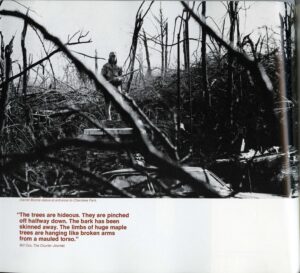
Tree implications:
Tree implications:
If not for the tornado, Cherokee Park would have a forest of trees diverse in age and species.
After the tornado, the larger trees were mostly destroyed. Some young trees (saplings) were able to grow and fill in the spaces that had been opened up to sunlight, but there were two problems:
1) the fastest growing species dominated.
2) the rest of the forest was also dealing with understory shrubs like bush honeysuckle that out-competed the slow growing trees like oak.
Overall, this led to a forest full of only fast growing plants – both native and invasive.
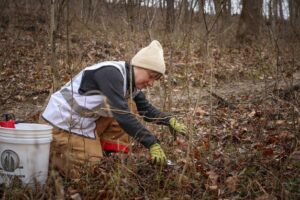
Invasive species implications:
In the 1960s, bush honeysuckle was planted along Interstate 64 to control erosion (we now know it does the opposite) and to create a pleasant view and control noise. The tornado spread honeysuckle through the park and opened up former forested areas to the sunlight that would fuel the honeysuckle’s dominance in natural areas.
Olmsted Parks Conservancy began a capital campaign aimed at Woodland Restoration of Cherokee and Seneca Parks. A field crew was hired, trucks and equipment purchased, and the initial clearing to reclaim 200 acres of Cherokee began. It was done in partnership with UofL Biology Dept., botanist Pat Haragan (You can get Pat Haragan’s botanical guide HERE,) and many other ecologists.
And now the fruits of our labor – native plants that survived in the seedbank have reemerged (crested coral root orchid perhaps is our most celebrated example).
The work is ongoing. We still work full time to reclaim the forest and mitigate honeysuckle, wintercreeper, chaff flower and more. But we have much to celebrate.
Find something similar: History Highlight News Cherokee Park
